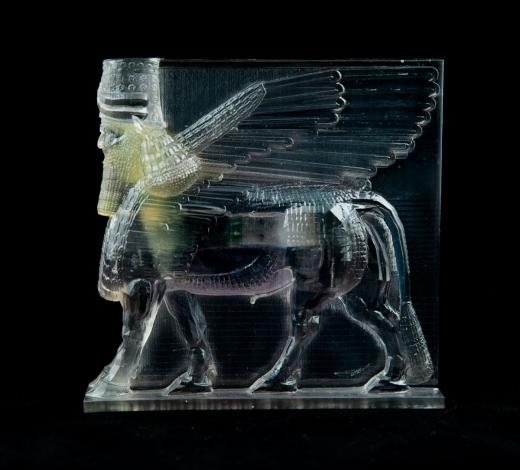3D Printing the Future
3D Printing the Future
A couple of years ago I attended a 3D printing workshop at my university. It was organized by a bunch of nerds who held a revolutionary speech about the opportunities of 3D printing; how it would change our consumer behavior, how it would restructure the market sphere, and how it was basically the end of capitalism. After their motivational pitch we all got to use the technology of the future ourselves. Next to the typical phallic jokes around the possibilities of 3d printing we were presented with 3 options: to print a lego stone, a whistle, or a bottle opener. The opener broke at the first attempt of using it.
But beyond the attempt to free us from capitalist market structures, 3D printing has entered the arena of artistic production and provocative thought. One of the best examples for this is probably the Additivist Manifesto by Moreshin Allahyari and Daniel Rourke. On their website they write that Additivism aims “to accelerate the 3D printer and other technologies to their absolute limits and beyond into the realm of the speculative, the provocative and the weird.” So enough with printing whistles. Let’s print cyborgs, interspecies sex organs, love, capital and junk. Let’s create new dystopian and utopian visions.
Additivism is inspired by post humanist and feminist theories, which aim to accelerate the human body to a new level. In the cyborg manifesto the philosopher Donna Harraway writes that “I’d rather be a Cyborg than a Goddess.” The idea is that with the means of technology humans can evolve to a new (higher) species. This futurist way of thinking can be found in many contemporary artworks using 3D printing. Looking at artists like Amy Karle we are not too far away from becoming cyborgs. She is currently growing a human hand using 3D printing technology.
Is Additivism an alternative future? I’d rather be a cyborg than destroyed by ISIS. Allahyari, one of the founders of the Additivist manifesto, is using 3D printing as a process for repairing history and memory. Her work titled "Material Speculation: ISIS" features reprinted statues which got destroyed by ISIS in 2015. Each of the reprinted statues includes a memory card with the information gathered during Allahyari’s research. The history of the statues is now encapsulated within them and cannot be separated. Her work is currently on display at the Venice Biennale.

Morehshin Allahyari, "Material Speculation - Lamassu"
Last week Allahyari and Rourke held an Additivist workshop in Berlin in cooperation with Transmediale. This workshop was slightly different from my first encounter with 3D printing. First of all: we didn’t get to print anything. Instead we thought about the speculative, the weird, the futuristic, the dystopian options 3D printing and other technologies might offer us.
Thereby we especially focused on Boris Groys’ division between art and design. Design makes life better, easier, nicer. Whereas art seeks to counter the status quo, it starts from a position of failure. What we got to learn in the Additivist workshop was “to embrace the horror.” Humans are fallible, even technology will never turn us into the divine beings we aspire to be. Instead of making things better through design, we, as artists, are trying to show the imperfection of things with the means of technology.
One of the works produced during the workshop is Gonçalo Lamas’ & Rita Macedo's "Amphibian Dark Pod". It is the 3D blueprint for an underwater breathing device with sentient tentacles of lust. The carrier of the pod swims in a vicious fluid engaging in sexual encounters with other wearers of the pod. And even though this will never become a reality, it is a speculative utopia (or dystopia?) which might inspire new designs or artworks. Besides, the "Amphibian Dark Pod" is indisputably more exciting than a printed bottle opener.
* * * * *
"Additivism" workshop & public talk with Morehshin Allahyari & Daniel Rourke (22 & 23 June 2016 @ District) – more info